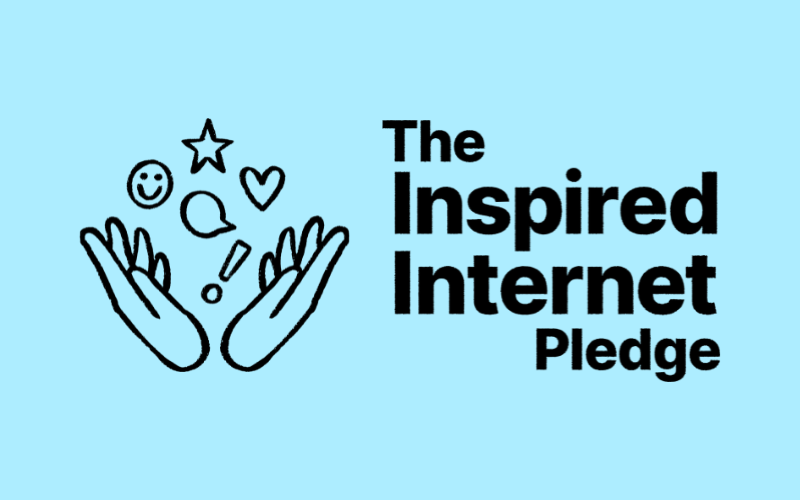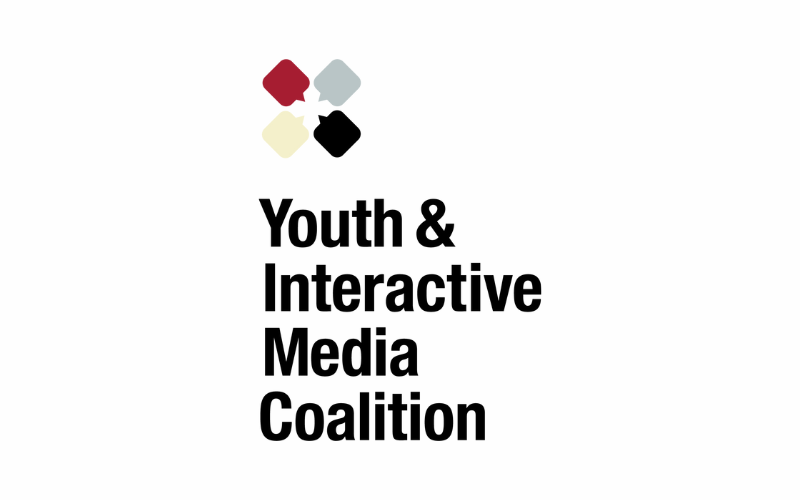At the Digital Wellness Lab, we are always seeking to better understand young people’s experiences in their online environments and the impacts on their health, safety, and overall well-being. In our most recent Pulse Survey, Adolescents & Young Adult Media Use: Exploring the Nuances of Social Media Use and Experiences, we asked 1,505 young people between the ages of 15 and 22 about aspects of their social media use using a unique approach: after gathering general information about the platforms they typically used, each participant was assigned a single platform (e.g.,TikTok, YouTube, Snapchat, Instagram) to answer questions about; they were then assigned a space within that platform (e.g., For You Page, Direct Messages) to answer questions about.
Our questions were centered around:
- Spaces they generally navigate to within popular social media platforms
- The perceived impact of time spent in a specific space on aspects of their functioning and well-being
- If they had ever had negative online experiences within that space
- The characteristics of a negative experience (i.e., where it took place, who was involved, what they did in response)
Why this approach?
The United States Surgeon General recently called for social media platforms, researchers, educators, parents, and young people themselves to take further action towards (1) ensuring youths’ safety online and (2) supporting scientific understanding of how social media design relates with youths’ well-being. Clearly defining and understanding what we mean by “social media” is an essential first step.
The reason it is not very useful to think about social media in general terms is that the online environments where youth spend a significant amount of time are highly complex and their experiences vary depending on which type of space they are spending their time in. For example, spending an hour having a one-on-one exchange using direct messaging with a friend likely has different outcomes than an hour spent scrolling through a recommended content feed of videos the algorithm thinks you might enjoy.
Through this survey, we are advancing a more nuanced approach to thinking about social media that breaks down different types of online spaces within and across platforms and explores how they might contribute to different wellbeing and safety outcomes.
Understanding spaces within platforms
What We Asked
We asked about which platforms they commonly use and where within those platforms they like to go.
What We Learned
As with our previous Pulse Surveys, we found that youth engage with many different online platforms, but YouTube, Instagram, TikTok, and Snapchat continue to stand out as the primary platforms for daily social media use. Within those platforms, they visit a number of different spaces, from home feeds to stories to direct messages — this forms an initial picture of not just the complex makeup of these platforms’ environments, but the range of experiences youth can have within them.
Across social media platforms, there are similar design spaces that can be grouped into overarching categories. For our primary platforms, the following types of platform spaces included: Messages, Search Pages, Short Video Content Feeds, and Stories. We used these categories to examine the perceived effects of their use on young people.
Key Takeaways
Social media is complex and thinking about social media in terms of platforms remains insufficient in supporting youths’, parents’, and other stakeholders’ understanding of social media effects; thus, it is critical to take a deconstructed approach to defining it. This sets the stage for more targeted conversations and interventions surrounding the potential outcomes of social media use. It also encourages young people to recognize the similarities of certain spaces across platforms and reflect upon the platforms’ intentions in designing these spaces.
Try this: Imagine a platform as a house, with each in-platform space as a different room. Where do you like to spend your time? What do you do there? Are your experiences the same across all of these spaces and platforms? If not, how do they differ and why?
Examining perceived effects within certain spaces
What We Asked
We explored how time spent in specific types of platform spaces made them feel about different aspects of their well-being.
What We Learned
While overall, 43.28% agreed that the people on their assigned platform really try to help them, and 42.94% agreed that people were there for them when needed, perceived social support was higher for platforms that focus more on social interactions (i.e., Instagram; Snapchat).
Further, different types of platform spaces were associated with different outcomes. Time spent in chats/messages (i.e., spaces where youth engage in more direct interactions) was associated with improved social relationships, whereas time spent using short video content feeds (i.e., spaces with endless streams of algorithm-recommended content) was connected to worsened attention spans but improvements to stress levels. No platform space was seen as having an entirely positive or negative impact. Across each space some youth reported improved outcomes, others worsened. This indicates the importance of acknowledging the specific characteristics of the user and their engagements with those spaces.
Key Takeaways
Engaging with certain spaces within online platforms may impact youth (and all of us) differently. Previous research has shown that youth’s experiences with social media vary depending on their individual characteristics (Valkenburg et al., 2022). Factors that may make youth more susceptible to positive or negative online experiences (e.g., gender identity, race/ethnicity, developmental stage, mental health diagnoses, home or social environment) must be considered when thinking about outcomes of social media use.
Try this: Think about the types of online spaces you engage within — Chats/Messages, Search Pages, Short Video Content Feeds, Stories. Which make you feel good? Which make you feel bad? Reflect on what it is about your time using each that may drive your feelings about them.
Protecting against negative experiences
What We Asked
We asked if they had ever had a negative experience on their assigned platform and about the characteristics of that experience.
What We Learned
Negative online experiences are fairly common. A little over a third of our sample (37.97%) reported that they’d had a negative (i.e., uncomfortable or unsafe) experience within their assigned platform. Within platform spaces, Short Video Content Feeds and Messages stood out as the most common spaces for negative experiences, with strangers as the most common perpetrator.
The most common actions taken in response involved utilizing the platform’s built-in safety features (e.g., blocking, reporting). As with our previous survey (Bickham et al, 2023) and other research (Thorn, 2023), blocking was more common than reporting. Platform-based responses were also more popular than offline responses, though more youth reported confiding in a friend than in a family member or other trusted adult. 17% did not do anything in response.
Key Takeaways
Certain spaces within popular platforms may put users at greater risk for negative experiences than other kinds of spaces. For example, while Messages are associated with improved social relationships, they can also be a space where bullying or harassment (e.g., receiving unsolicited messages) occur. While Short Video Content Feeds may relieve stress for many, they may also sometimes display upsetting content.
Because experiences depend on the specific characteristics of the user and their engagements with those spaces, it’s important for individuals to take note of where negative experiences are occurring, and learn ways to control online experiences (e.g., changing privacy settings, hiding posts) and coping strategies if negative experiences occur (e.g., blocking/reporting, confiding in a friend or family member).
Try this: Go through the different spaces of one of your favorite platforms and familiarize yourself with the different options they offer for responding to a post, message, or other kind of feature. Review the settings, and select the options that help you create the kind of online experience you want.
In Conclusion
Adolescents and young adults are not simply “using social media” — they are engaging in complex online environments that create opportunities for positive experiences (e.g., social connection, reduced stress levels) and potential risks that may bring about harm (e.g., exposure to hate speech or other distressing content).
Viewing social media as a set of evolving online spaces that share, at times, important commonalities helps build out a more nuanced understanding of social media in a way that supports more targeted conversations around this necessary topic. Moreover, maintaining an awareness of the types of online spaces one engages with opens up opportunities for intervention, be it deprioritizing use of certain online spaces in favor of others or employing user settings for an experience tailored to individual needs.
When it comes to addressing negative experiences online, youth appear to gravitate toward more autonomous responses (e.g., blocking, reporting). However, these responses (or lack thereof) may be influenced by concerns about the consequences of utilizing safety features, including how effective the strategy will be, whether they will remain anonymous, and if there will be repercussions (Thorn, 2021). Empowering youth to understand their options for seeking help (online and offline) and the processes that follow may support their inclination to take action.
For parents and other adults, using the concepts of “spaces” can function as a jumping off point for discussions with young people — where do they go, what types of interactions or experiences do they have when they are there, and how does it make them feel? Does that online space have privacy or safety settings they could utilize? What other strategies might they use to regulate their social media experiences and benefit their personal functioning and safety in such spaces?
It is important to remember that social media represents an important space for youth to socialize and can aid them in achieving normal developmental goals/milestones (Moreno & Uhls, 2018). Reflecting on how engagement in certain types of in-platform spaces may impact overall wellbeing (for better and worse) may help empower youth to curate their online experiences to their individual needs, promoting more beneficial experiences and mitigating negative outcomes (see Schreurs & Vandenbosch, 2021). After all, the solution is not to stop using social media, but rather to use it in ways to maximize its benefits and minimize its potential harms.







